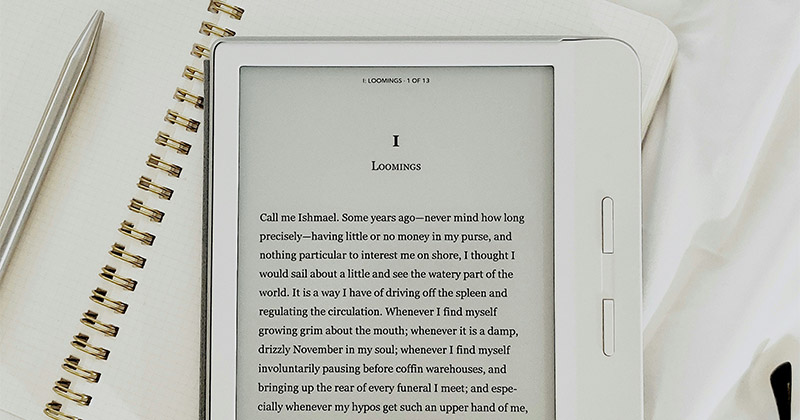Paperbacks have their own advantages, however the world is moving towards the digital life. While paper books may offer great aesthetics and lovely feeling and smell of newly printed paper that we all love, ebooks are changing the trends. Both types of books have their own pros and cons but ebooks represent the new generation’s vision.
When we compare the two, we’ll see that while printed hardcover books are popular for their authenticity and the feel of holding a real book, ebooks are more functional and do considerably better in terms of portability which enables the reader to keep a large number of books on the device, many more than anyone can read in a lifetime. Students profit the most from it because they no longer have to carry a bag full of books with them every day. Ebooks are portable and lightweight, making them convenient to transport. Instead of lugging several heavy books, an eBook reader can store a large number of ebooks.
The latest research indicates a lot of reasons why ebooks are becoming more and more popular. For us, the schools or educational institutions, except for portability and space saving, there are other important reasons.
They are good for the eyes. This feature of ebooks is beneficial not only for students with special needs or sight disadvantaged but also for anyone because ebooks have features that allow the readers to alter the brightness of the screen based on the time of the day and their preferences and even offer a read in the dark mode, with lighting that won’t strain readers´ eyes or disturb people around them.
The access to reading for those with disadvantages is especially important. Ebooks are accessible to students with visual impairments or other disabilities, as many devices offer built-in features such as screen readers and adjustable font sizes.
Another advantage is easier note-taking. With ebooks, students can create highlights and take notes directly in the text. This eliminates the need for separate notebooks or papers, making it easier to keep track of important information. They allow adjustment and highlighting.
Unlike traditional textbooks, ebooks have features that allow students to adjust the colour and size of their highlights, making it easier to differentiate between key concepts and supporting details.
They can also utilise the built-in dictionary feature of many e-books to define an unknown word. Most devices allow them to do this simply by pressing and holding the word they want to search up.
Many e-books allow them to search through an entire book in seconds. Instead of turning page after page to locate what they’re looking for, they may easily search for information in an e-book.
Read aloud feature also has a positive impact. Text-to-speech and read-aloud capabilities have been built into ebooks. This allows users to listen to ebooks if they are too busy to read them, such as while they are exercising, relaxing or doing housework. This function is also beneficial to children and students with learning disabilities or vision impairment. It can also help the user comprehend how to pronounce a specific word.
Inclusion of the interactive features to an ebook improves the reading experience. Audio and video can be incorporated in ebooks as well as external links which provide further information. The user can even save a specific page or discover a word quickly and easily. There are numerous interactive aspects that can be implemented to improve the overall reading experience.
Other aspects such as cost efficiency, which makes ebooks a more affordable or eco-friendly approach, that saves not only trees but reduces the environmental impact of publishing houses and the printing industry in general, contribute to fast spread of ebooks.

